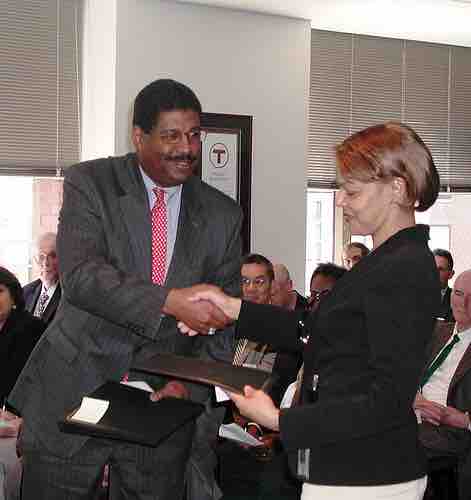Defining Leadership
Over the years the philosophical terms "management" and "leadership" have been used both as synonyms and with clearly differentiated meanings. Debate is fairly common about whether the use of these terms should be restricted and generally reflects an awareness of the distinction made by Burns (1978) between "transactional" leadership (characterized by emphasis on procedures, contingent reward, management by exception) and "transformational" leadership (characterized by charisma, personal relationships, creativity). Management is often associated with the former and leadership with the latter.
Leaders who demonstrate persistence, tenacity, determination, and synergistic communication skills will bring out the same qualities in their groups. Good leaders use their own inner mentors to energize their team and organizations and lead a team to achieve success.
Group Leadership
In contrast to individual leadership, some organizations have adopted group leadership. In this situation, more than one person provides direction to the group as a whole. Some organizations have taken this approach in hopes of increasing creativity, reducing costs, or downsizing. Others may see the traditional leadership of a boss as costing too much in team performance. In some situations, the team members best able to handle any given phase of the project become the temporary leaders. Additionally, staff experiences energy and success when each team member has access to elevated levels of empowerment.
Leadership Styles
A leadership style is a leader's approach towards providing direction, implementing plans, and motivating people. It is the result of the philosophy, personality, and experience of the leader. Rhetoric specialists have also developed models for understanding leadership (Robert Hariman, Political Style; Philippe-Joseph Salazar, L'Hyperpolitique. Technologies politiques De La Domination).

Engaging Style of Leadership
Different styles of leadership can achieve the leading function.
Different situations call for different leadership styles. In an emergency, when there is little time to reach an agreement and where a designated authority has significantly more experience or expertise than the rest of the team, an autocratic leadership style may be most effective. However, in a highly motivated and aligned team, with a homogeneous level of expertise, a more democratic or laissez-faire style may be more effective. The leadership style adopted should be the one that most effectively achieves the objectives of the group while balancing the interests of its individual members.
Positive Reinforcement
Anyone thinking about managing a team must consider positive reinforcement. B.F. Skinner, the father of behavior modification, developed this concept. Positive reinforcement occurs when a positive stimulus is presented in response to a behavior, increasing the likelihood of that behavior in the future.
The following is an example of how positive reinforcement can be used in a business setting. Assume praise is a positive reinforcement for a particular employee. This employee does not show up to work on time every day. The manager of this employee decides to praise the employee for showing up on time when the employee actually does so. As a result, the employee comes to work on time more often because the employee likes to be praised. In this example, praise (the stimulus) is a positive reinforcement for this employee because the employee arrives at work on time (the behavior) more frequently after being praised for it.
The use of positive reinforcement is a successful and growing technique used by leaders to motivate and attain desired behaviors from subordinates. Organizations, such as Frito-Lay, 3M, Goodrich, Michigan Bell, and Emery Air Freight, have all used reinforcement to increase productivity. Empirical research covering the last 20 years suggests that reinforcement theory has a 17% increase in performance. Additionally, many reinforcement techniques, such as the use of praise, are inexpensive and provide higher performance and employee satisfaction for lower costs.